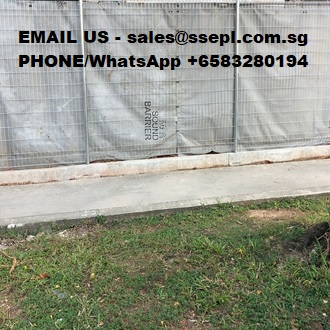Singapore Specialized Engineering Pte ltd
Your Trusted Specialist for Engineering work.
(BCA Registered Contractor)
Contact Us
Phone- +65 83280194
sales@ssepl.com.sg

Boundary Noise Barrier

The Ultimate Guide to Boundary Noise Barriers: Why They Matter and How They Work
Noise pollution is an ever-growing concern in urban environments. With the increase in vehicle traffic, construction, and industrial activities, many residents find themselves struggling against the constant din of everyday life. Enter the boundary noise barrier—a solution designed to mitigate sound pollution and provide peace and quiet in noisy neighborhoods. Singapore Specialized Engineering PTE Ltd is a well-known service provider in Singapore. In this comprehensive guide, we will explore what boundary noise barriers are, how they work, their benefits, and factors to consider when choosing the right barrier for your needs.
What is a Boundary Noise Barrier?
A boundary noise barrier, also known as a sound barrier, is a structure built along the perimeter of a property or along roadways and railways to block, absorb, or deflect noise. These barriers are typically made from materials such as concrete, wood, metal, or specialized acoustic panels that are designed to reduce sound transmission.
How Do Boundary Noise Barriers Work?
Boundary noise barriers function based on three primary principles: reflection, absorption, and diffraction.
Reflection: Noise waves hit the barrier and are reflected back towards the source, preventing them from reaching residential areas.
Absorption: Some materials used in noise barriers are designed to absorb sound waves, reducing the overall volume of noise that travels through the barrier.
Diffraction: Noise barriers can also create a line-of-sight obstruction. By blocking the direct path of sound waves, they reduce the amount of noise that reaches areas behind the barrier.
Contact us via whatsapp+6583280194 or email sales@ssepl.com.sg today to schedule a consultation.